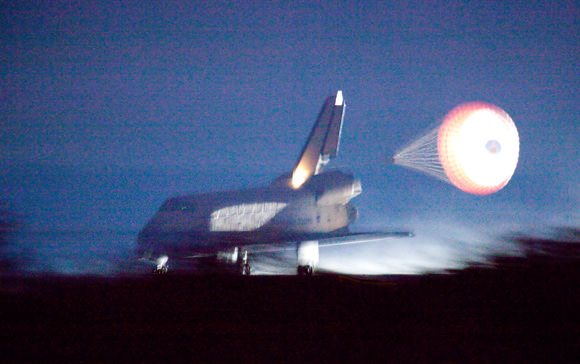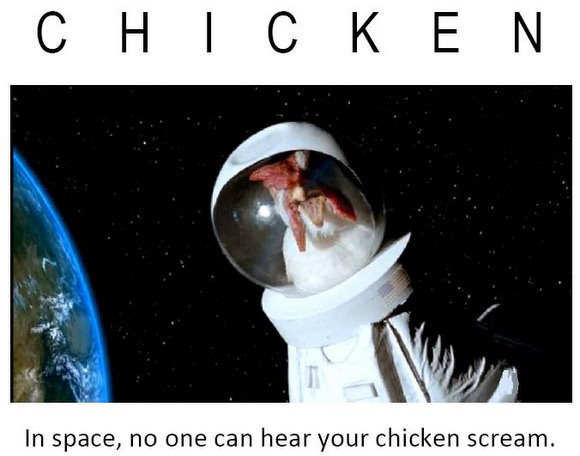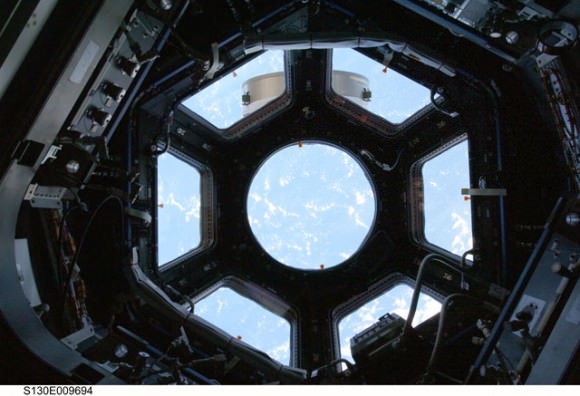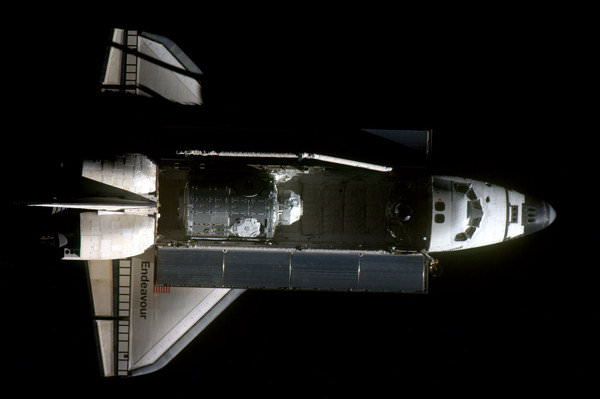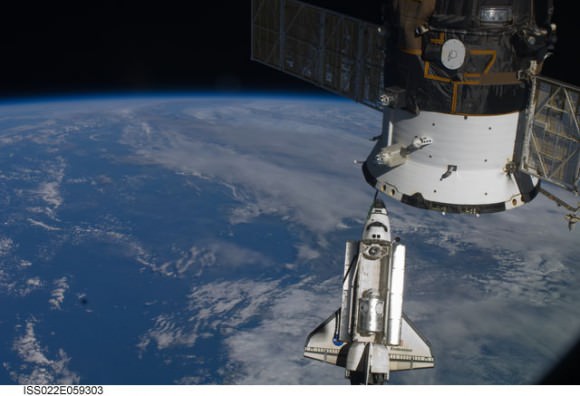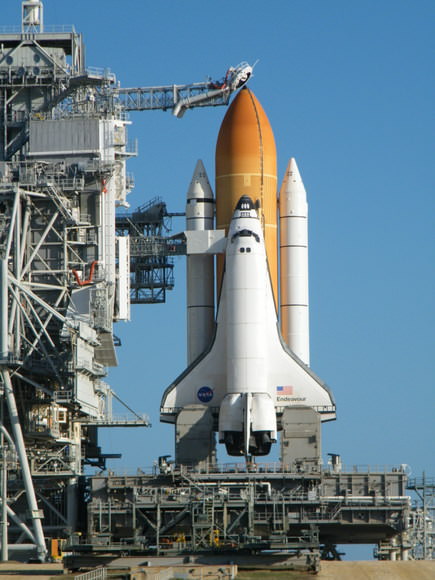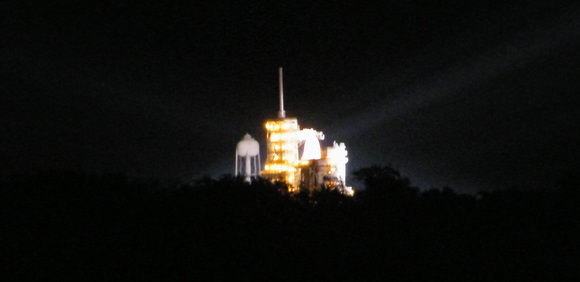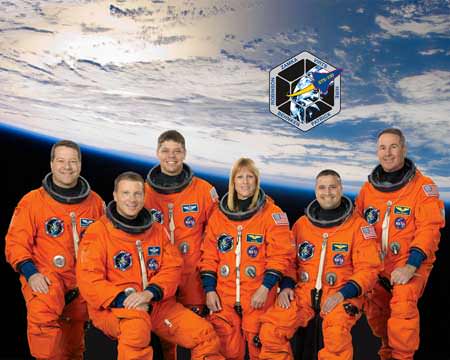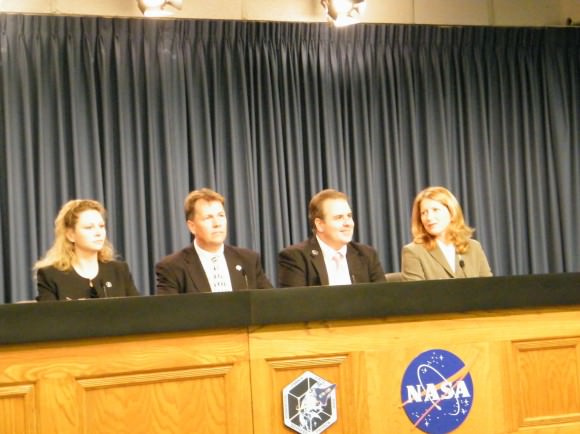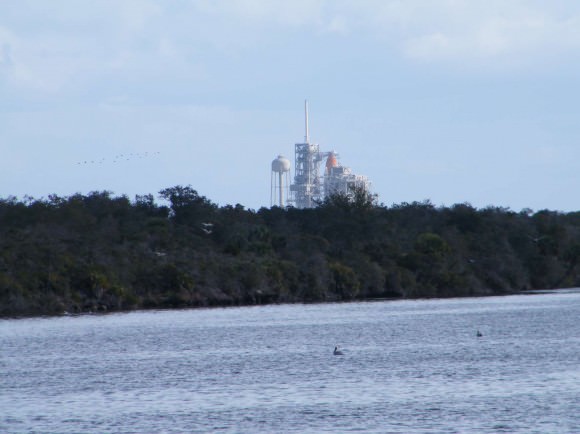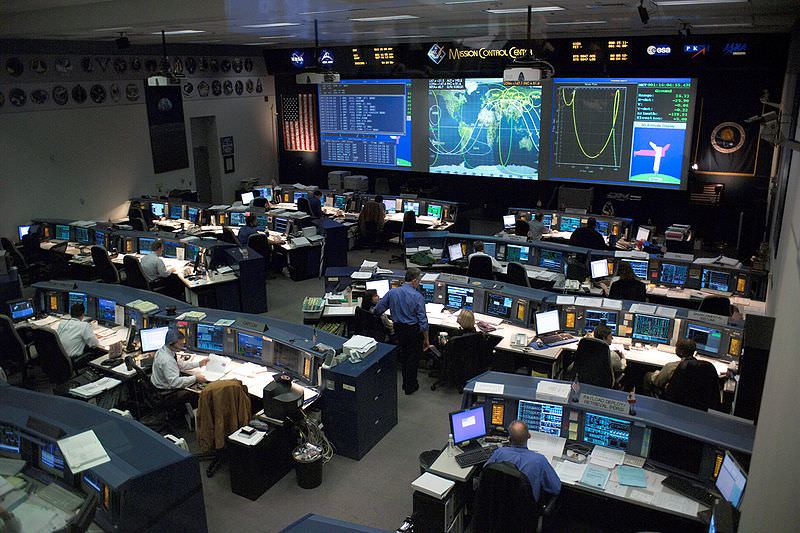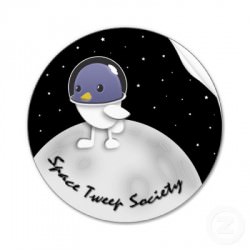[/caption]
Space shuttle Endeavour loudly announced its arrival with twin sonic booms, then two minutes later emerged like a phantom out of the darkness to touch down beautifully on runway 15 at Kennedy Space Center. The landing at 10:20 p.m. EST Sunday ended the two-week STS-130 mission to the ISS. After early concerns about the weather, conditions were almost ideal for landing.
“STS-130 is mission complete, and we’re safe on deck” said Commander George Zamka, speaking on the runway after the crew disembarked from Endeavour. “The Cupola is beautiful in both design and function, and Endeavour was perfect throughout the flight… Now it’s time for us to hit the showers and get used to life on Earth again.”
“It was really exciting to land on the first opportunity,” said astronaut Bob Behnken, “and we’re happy to put this capstone on such a great mission.”
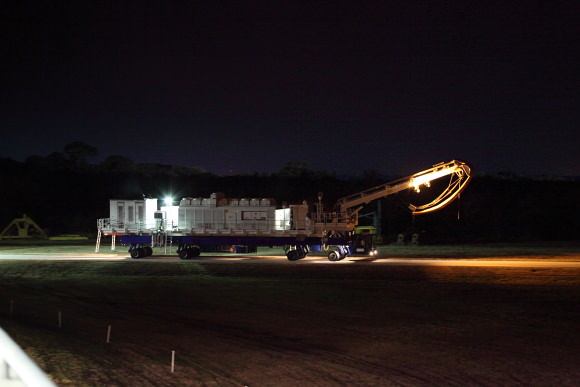
The STS-130 crew delivered the “room with a view” to the ISS – the Node 3, or Tranquility module with the attached Cupola that will provide astronauts with 360 degree views of Earth, space and robotic operations outside the space station.
At the post-landing press conference, mission managers echoed the astronauts’ sentiments.
“It was a fantastic landing day, and Endeavour’s landing here tonight at KSC capped off a perfect mission on orbit,” said Mike Moses launch integration manager for the space shuttle program. “The vehicle performed absolutely flawlessly, the crew did outstanding job,… the installation of Node 3 and Cupola all went perfectly. This just illustrates the great job the all the teams did. Just a spectacular mission.”
Space shuttle launch director Mike Leinbach also looked to what is ahead for the space shuttle program.
“One of the most magical things we get to do here is to walk around the space shuttle on the runway after a mission,” he said. “The shuttle looks outstanding out there, and we’re going to start the final processing flow of Endeavour tonight. So that will be a milestone for the space shuttle program, and we will go into that with our heads held high and we’re going to process the vehicle as we always do and be ready to fly her last mission. A little bit of a sad note, but a great ending to a great mission and we’re looking forward to the next one.”
With this mission the ISS is now 98% mass complete.
Next up for the shuttle and ISS programs is Discovery’s STS-131 mission, currently slated to launch on April 5, 2010.
While this marks the end of this mission — which Ken Kremer and I have been reporting on live from KSC — I will still be hanging around the Space Coast for a few more weeks, so look for more news (and launches!) coming up. And we hope to have photographer Alan Walters on location at KSC for Universe Today covering the final flights of the space shuttle program.

